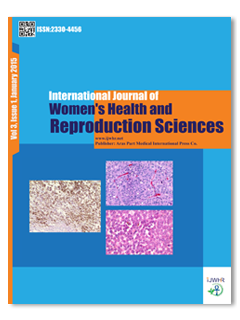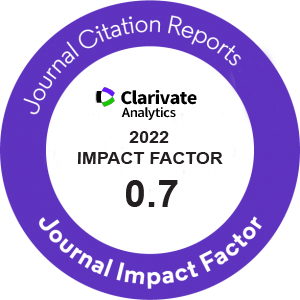| Original Article | |
| A Retrospective Study of Placenta Creta: A Six Year Experience and Histopathological Insights | |
| Hamide Sayar1, Esma Gurbuz1, Emel Canaz2, Nurten Seringec3, Deniz Cemgil Arikan2, Harun Ciralik1 | |
| 1Department of Pathology, Faculty of Medicine, Kahramanmaras Sutcu Imam University, Kahramanmaras, Turkey 2Department of Obstetrics and Gynecology, Faculty of Medicine, Kahramanmaras Sutcu Imam University, Kahramanmaras, Turkey 3Department of Physiology, Kahramanmaras Sutcu İmam University Faculty of Medicine, Kahramanmaras, Turkey |
|
|
IJWHR 2015; 3: 067-071 DOI: 10.15296/ijwhr.2015.11 Viewed : 6132 times Downloaded : 5687 times. Keywords : Placenta Accreta, Placenta Increta, Placenta Percreta, Cesarean Section |
|
| Full Text(PDF) | Related Articles | |
| Abstract | |
Objectives: The aims of this study were to describe the histopathological findings of placenta creta samples obtained over a six year period and to report the obstetric conditions related to the histopathologic findings. Materials and Methods: Pathology records from gravid hysterectomies performed due to placenta creta from 2006 to 2012 were reviewed. We evaluated the decidual layer, percent of multinucleation, and depth of invasion of Interstitial Trophoblasts (ITs) at the implantation site. Spiral arteries were also assessed to determine the degree of remodeling. Results: During the study period, 20 cases of placenta creta occurred: 3 (15%) were placenta accreta, 7 (35%) were placenta increta, and 10 (50%) were placenta percreta. In 25% of cases, vessels had no remodeling at all, whereas 45% had partially remodeled vessels, and 30% completely remodeled vessels. The proportion of incomplete or complete physiological changes in the vascular wall did not significantly differ between the different subtypes of creta (P=0.68). Depth of IT invasion varied significantly between the groups (accreta 1.30±0.17 mm, increta 3.56±1.12 mm, and percreta 2.00±1.31 mm, P=0.011). The number of multinucleated trophoblasts in the placenta accreta and increta were higher than those in placenta percreta cases. A history of Cesarean Section (CS) was present in 80% of the patients. All cases with placenta percreta (N=10) had undergone more than two previous CSs. Placenta previa was identified in four cases (20%). Conclusion: Uterine damage caused by CSs results in poor decidualization, abnormal trophoblastic invasion, incomplete vascular remodeling, fewer multinuclei trophoblasts and deep infiltrative pathology. |
Cite By, Google Scholar
Google Scholar
PubMed
Online Submission System
 IJWHR ENDNOTE ® Style
IJWHR ENDNOTE ® Style
 Tutorials
Tutorials
 Publication Charge
Women's Reproductive Health Research Center
About Journal
Publication Charge
Women's Reproductive Health Research Center
About Journal
Aras Part Medical International Press Editor-in-Chief
Arash Khaki
Mertihan Kurdoglu Deputy Editor
Zafer Akan






















